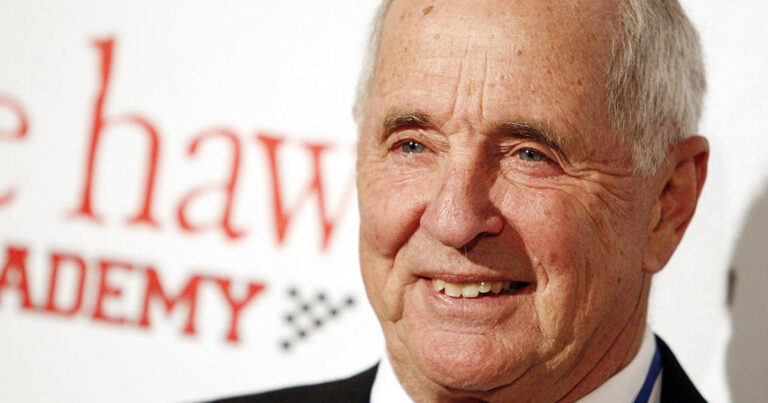Apollo 8 astronaut Bill Anders, who captured one of the most iconic photos of the space age — a mesmerizing sight of the blue-and-white Earth rising from the moon’s cratered horizon in the deep darkness of space — died Friday when the small plane he was piloting crashed off the coast of Washington state. He was 90 years old.
His son, Greg Anders, confirmed his father’s death and told CBS News the plane that crashed was his.
Kevin Winter/Getty Images
The Federal Aviation Administration said in a statement to CBS News that the Beech A45, with only the pilot on board, crashed about 11:40 a.m. local time off the coast of Port Roche on San Juan Island.
San Juan County Sheriff Eric Peter told CBS News that investigators are searching the scene but have not yet found a body.
The FAA and the National Transportation Safety Board are investigating.
Born in Hong Kong on Oct. 17, 1933, Anders attended the U.S. Naval Academy and the Air Force Institute of Technology, and was selected as an astronaut for NASA’s space program in 1964, logging more than 6,000 flight hours, according to his NASA biography.
He served as the Lunar Module Pilot for Apollo 8 and as a backup pilot for the Gemini 11 and Apollo 11 flights.
NASA Administrator Bill Nelson posted on social media Friday night that Anders “journeyed to the mouth of the moon” on the Apollo 8 mission and “helped us all see something different about ourselves. He embodied the lessons and purpose of exploration. We will miss him.”
Taken on Christmas Eve 1968 while Anders, Apollo 8 Commander Frank Borman, and Jim Lovell were orbiting the moon, the image known today simply as “Earthrise” was the first ever image of Earth in the vastness of space and quickly became a symbol of the environmental movement.
NASA/Headquarters
“The most impressive thing about this flight was [when] “We were in lunar orbit,” Anders said in a NASA oral history interview, “and we were going backwards, upside down, and we could barely see the Earth or the Sun. And then when we rotated back and saw the Earth rising for the first time, it was, without a doubt, the most impressive thing ever.”
He described the mother planet as “a sphere of such delicate color that it looked to me like a Christmas tree ornament rising above this very bleak and ugly lunar landscape.”
Anders, Borman and Lovell became the first humans to leave Earth orbit, orbited the Moon ten times during their Christmas season flight and helped pave the way for the Apollo 11 moon landing the following year.
Many space experts and historians consider Apollo 8 the most audacious of the Apollo missions. The astronauts were the first to launch aboard the massive Saturn V rocket, the most powerful rocket in the world, and the first to visit another world, even if it was far away.
Apollo 11 command module pilot Mike Collins once said that Apollo 8 was the more important mission.
“Well, I’ve thought about it and I try to be objective,” Anders said. “Yes, I think it was very significant. I think the moon landing was very significant. We were the first people to leave our home planet and they were the first people to go to another planet. I’m not going to say Apollo 8 was more significant, but they were both significant.”

